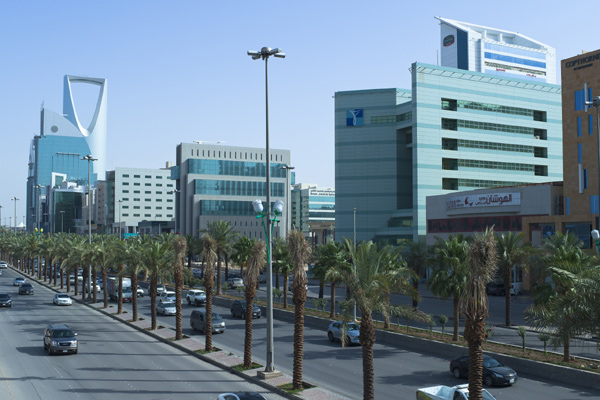
Saudi growth seen at over 2pc; outlook stable
RIYADH, October 7, 2018
Saudi Arabia's economic growth is expected to be stable, averaging just over 2 per cent per year over 2019-2021, according to a new report from S&P Global Ratings.
The agency has affirmed its 'A-/A-2' unsolicited long- and short-term foreign and local currency sovereign credit ratings on Saudi Arabia. The outlook is stable.
The stable outlook is based on the expectation that moderate economic growth will continue through 2021, supported by rising government investment, it said.
Higher-than-expected fiscal revenues have been met with higher expenditures, but a material deviation from official fiscal targets is not expected, it said.
"We expect that the Saudi authorities will continue to take steps to consolidate public finances over the next two years, while maintaining the government's large stocks of liquid external assets. We could raise the ratings if Saudi Arabia's economic growth prospects improved markedly beyond our current assumptions," said the report.
"We could lower our ratings if we observed a reversal in the trend of fiscal consolidation, or a sharp deterioration of the sovereign's external position. An unexpected materialisation of contingent liabilities or a build-up of arrears could also place additional pressure on expenditures. The ratings could also come under pressure if we observed a significant increase in domestic or regional political instability, which we thought would have fiscal consequences," it said.
The ratings on Saudi Arabia are supported by its strong external and fiscal stock positions, which S&P Global Ratings expects it will maintain despite ongoing central government deficits.
"Since our last review in April, we have raised our oil price assumptions; but we do not expect any material change to the overall pace of fiscal consolidation. We expect the additional revenues from higher oil prices will be spent as is suggested in the recent 2019 pre-budget statement. The ratings are constrained by the limitations on the transparency of government assets and limited monetary policy flexibility.
"While decision-making structures are centralised and, in our view, relatively opaque, we do not expect any major deviation from the stated domestic policy course of fiscal consolidation, economic diversification, and gradual socioeconomic liberalisation," the report said.
The report said it expects that the key parameters of Saudi Arabia's institutional framework will remain steady through the 2018-2021 forecast period. The country will partly fund its ambitious economic reform programme using the large fiscal and external buffers that it amassed during the pre-2015 era of twin balance of payments and budgetary surpluses.
The government is implementing a series of reforms that include social measures that aim to increase labour participation (particularly of women), to improve levels of educational attainment, and to raise the private sector's role in the economy, while achieving a balanced budget by 2023. Although the country's decision-making process remains highly centralised, any major deviation from the goal to broaden the economy beyond its traditional reliance on hydrocarbons is not expected.
Higher-than-expected oil prices throughout 2018 have led to an increase in expenditures that include employee bonuses and reinstated allowances.
"We do not see these measures as indicative of a weakening of the overall target of balancing the general government budget by 2023, given the fiscal effort implemented to date and recent announcements regarding the 2019 budget. However, they do indicate that higher-than-budgeted revenues are more likely to be spent than saved as the government attempts to shore up support for its social liberalization plans," it said.
"We continue to anticipate that public investment will increase under a four-year stimulus plan whose goal is to stabilise private-sector demand, even as the government moves on other fiscal consolidation measures, such as energy tariff hikes. Higher oil prices, higher volumes of production, higher government expenditures, and positive high-frequency data support our projection of gradual economic recovery, following last year's contraction.
"Nevertheless, given that oil production makes up a significant portion of Saudi Arabia's GDP, forecasting growth in the country continues to be highly sensitive to assumptions of Opec production targets, not least because Saudi Arabia maintains the world's largest installed crude oil production capacity at around 12 million barrels per day, and is the key marginal producer. Our GDP per capita estimate is just over $23,000 in 2018, and we expect that, on a trend basis, growth will remain somewhat below that of peers," it said. - TradeArabia News Service







